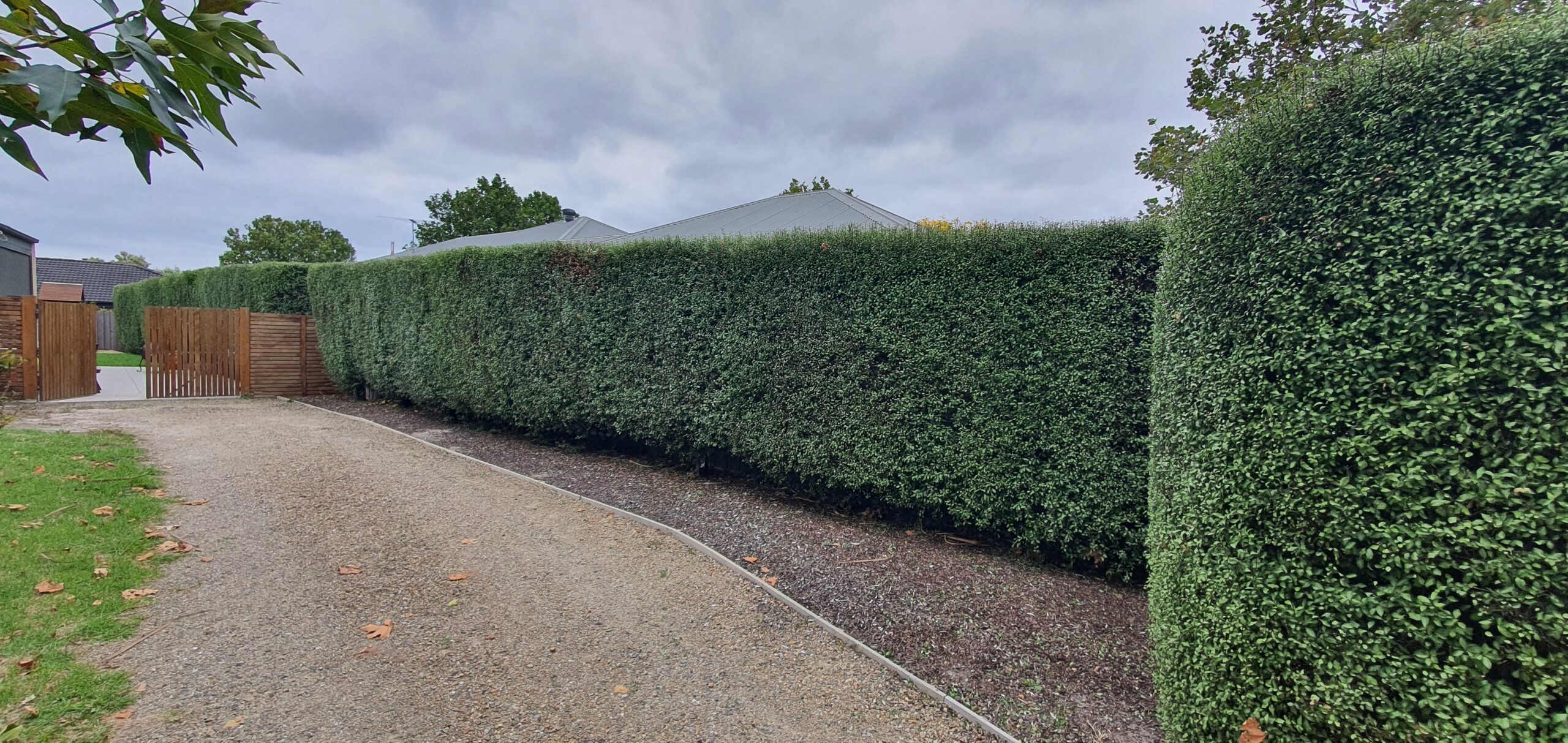Is your hedge overgrown? One of the most effective ways to keep hedges under control is by hedge trimming. Trimming involves cutting the outermost edges of the hedge to create a neat appearance. In this article, we will discuss how to maintain healthy hedges including overgrown hedge trimming.
Hedges are a great way to add privacy and beauty to your garden. However, maintaining them can be time consuming and challenging, especially if they are overgrown.
Why Hedge Trimming Is Important
Hedge trimming is essential to hedge maintenance because it keeps the hedge in shape and prevents it from becoming overgrown. If left untrimmed, hedges can become unsightly and even dangerous, as they may obstruct paths or windows.
Regular trimming helps to promote healthy growth by removing dead, diseased, or damaged branches, allowing for better airflow and sunlight penetration. This helps to reduce the risk of fungal diseases and pests that can attack and damage the hedge.
When to Trim Your Hedge
The timing of hedge trimming depends on the type of hedge you have. Some hedges require more frequent trimming, while others may only need a trim once a year.
However, as a general rule, deciduous hedges should be trimmed in late winter or early spring before new growth begins. Evergreen hedges should be trimmed in late spring or early summer after the new growth has started.
It is also vital to avoid trimming during periods of drought or extreme heat, as this can stress the hedge and cause it to lose moisture.
Tools You Need
To edge trim your hedge effectively, you will need the following tools:
- Hedge trimmer: This is the most important tool you will need. Choose a trimmer with sharp blades and a long reach, making the job easier and more efficient.
- Gloves: Wear gloves to protect your hands from scratches and cuts.
- Safety glasses: These will protect your eyes from flying debris.
- Ladder: If you have a tall hedge, you may need a ladder to reach the top.
How to Trim Your Hedges
Follow these steps to edge trim your hedge:
Step 1: Clear the Area
Remove any debris, such as fallen leaves or twigs, from around the hedge. This will make it easier to see the edges of the hedge and avoid damaging any plants or flowers growing nearby.
Step 2: Assess the Hedge
Look closely at the hedge and decide how much you need to trim. Avoid cutting too much at once, as this can stress the hedge and make it vulnerable to pests and disease. A good rule of thumb is to trim no more than one-third of the hedge at a time.
Step 3: Start Trimming
Using your hedge trimmer, start trimming the outermost edges of the hedge. Work your way around the perimeter, cutting the hedge into the desired shape.
Keep the blades parallel to the ground, as this will create a straight and even edge. If your hedge has a rounded shape, use sweeping motions to create a gentle curve.
Step 4: Go Slow
Periodically step back and check your progress. This will help you ensure that the hedge is evenly trimmed and that you are not cutting too much. Remember that cutting into the hedge too deeply can damage the plant and cause stress.
Step 5: Finish Trimming
Once you have trimmed the edges, go back over the top and sides of the hedge to create a uniform shape. Make sure to remove any dead or diseased branches as you go.
Step 6: Clean Up
Finally, clean up any debris around the hedge and dispose of it properly.
Conclusion
Hedge trimming promotes healthy growth and keeps your garden spick and span. To keep your hedges hedging your backyard, trim them at the right time, use the right tools, and avoid cutting too much at once. With a bit of care and attention, your hedges will be the envy of the neighborhood.
Looking for a professional hedge trimming service or tree trimming service? Hedge Works is your go-to specialist gardener. Hedge Works services Melbourne suburbs, Mornington Peninsula, Geelong, Ballarat and the Bellarine Peninsula, local guys, for a free quote call 0407100315 or info@hedgeworks.com.au




